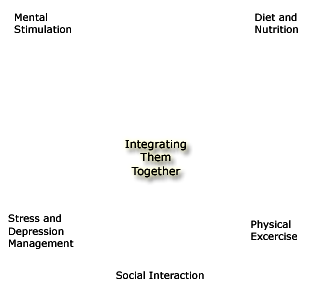Better Than Flu Shots
 A 2006 review of 48 reports including more than 66,000 adults, found that “Vaccination of healthy adults only reduced risk of influenza by 6% and reduced the number of missed work days by less than one day (0.16) days. It did not change the number of people needing to go to hospital or take time off work.” Reference: “Vaccines for preventing influenza in healthy adults.” The Cochrane Database of Systematic Reviews. (2006).
A 2006 review of 48 reports including more than 66,000 adults, found that “Vaccination of healthy adults only reduced risk of influenza by 6% and reduced the number of missed work days by less than one day (0.16) days. It did not change the number of people needing to go to hospital or take time off work.” Reference: “Vaccines for preventing influenza in healthy adults.” The Cochrane Database of Systematic Reviews. (2006).
A review of 64 studies noted that for elderly individuals living in nursing homes, “flu shots were non-significant for preventing the flu. For elderly living in the community, vaccines were not (significantly) effective against influenza, ILI or pneumonia.” Reference: “Vaccines for preventing influenza in the elderly.” The Cochrane Database of Systematic Reviews. 3(2006).
According to acclaimed neurosurgeon and medical journal editor Russell Blaylock, MD. studies have shown that environmental toxins, among them pesticides, mercury, aluminum and lead, are significantly more toxic to the brain following vaccination. He cites one noted immunologist, Dr. Hugh Fundenberg, who found that people at least 55 years old who receive the flu vaccine each year for five years in a row increase their risk of Alzheimer’s disease an astounding 1,000 percent. This is because of a phenomenon called “priming,” a hyperactive state of microglial alertness, which he calls immunoexcitotoxicity.
If you go to Dr. Blaylock’s website and click on his “published papers” you would see an article titled: Vaccines, depression, and neurodegeneration after age 50 years: another reason to avoid the recommended vaccines. This paper demonstrates the known links between: systemic immune activation, brain microglial activation, and both major depressive disorder and a worsening of neurodegenerative diseases. According to Blaylock “Because a number of vaccines are being recommended to adults, the risk of precipitating or worsening these disorders is quite real.” The mechanism for this process is discussed.
So What Could Work Better?
In Dec 2009 Julius Goepp, MD wrote an article for Life Extension Magazine titled: Are You Getting Optimal Flu Prevention? He notes the work of several other medical experts suggesting that at sufficient levels, a simple vitamin D3 supplement “has the capacity to supercharge the immune system and can virtually eliminate the risk of infection” including the flu.
For example Norris Glick, MD, Director of Rehab Services at Central Wisconsin Center, a facility for people with developmental disabilities, found with his 275 residents and 800 staff members that during the H1N1 (“swine flu”) outbreak of June 2009, only two of his patients (0.7%) developed influenza-like symptoms. During the same period, 103 staff members (7.5%) developed influenza-like illnesses—a 10-fold difference. Why the difference? Dr. Glick had been giving his patients high amounts of vitamin D3 for its neuroprotective properties. Vitamin D3 (the functional form) is, in truth, a neurohormone rather than a vitamin, meaning it has special effects on brain function. But it’s also a potent immune system booster. He concluded “staff were susceptible [to infection] while our residents were protected.” To read this entire article in context go here.
So how much vitamin D do you need? Dr. Blaylock notes:
“To determine how much vitamin D3 you need, get a vitamin D3 blood level test. Many medical labs are listing 30 ng/ml to 50 ng/ml as the normal value — this is wrong. For optimum health, D3 blood level should be between 70 ng/ml and 100 ng/ml.
Should your vitamin D3 level fall below 40 ng/ml, you’ll require a dose of over 2,000 IU per day to bring it up to normal. More severe deficiencies require 5,000 IU to as much as 10,000 IU a day to return values to optimal levels. At this level, vitamin D3 is highly protective against immunoexcitotoxicity.” The Blaylock Wellness Report Oct 2012 The Key to Better Mental Health
Prevention Strategies 








- FREE SPECIAL REPORT AND UPDATES
For free monthly updates on the latest practical research related to brain health and memory improvement, and a free 23 page report on How to Prevent or Arrest Alzheimer's, Click here. Recent Comments
Archives
- July 2019
- November 2018
- September 2018
- July 2018
- June 2018
- April 2018
- February 2018
- January 2018
- December 2017
- October 2017
- September 2017
- August 2017
- June 2017
- May 2017
- March 2017
- January 2017
- December 2016
- October 2016
- September 2016
- August 2016
- June 2016
- May 2016
- April 2016
- March 2016
- February 2016
- January 2016
- December 2015
- November 2015
- August 2015
- July 2015
- June 2015
- May 2015
- April 2015
- March 2015
- February 2015
- January 2015
- November 2014
- October 2014
- September 2014
- August 2014
- July 2014
- June 2014
- April 2014
- March 2014
- February 2014
- January 2014
- December 2013
- November 2013
- October 2013
- September 2013
- August 2013
- July 2013
- June 2013
- June 2012
- February 2012
- January 2012





